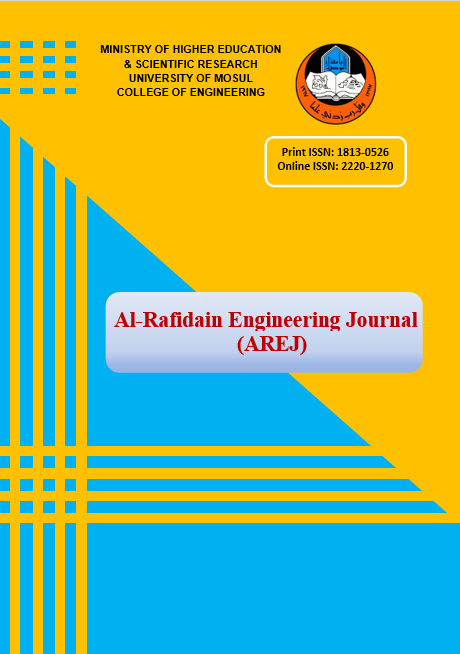Abstract
This research includes experimental investigation and theoretical simulation which is manufactured locally in a laboratory to assess the characteristics of the two-phase convective heat transfer and performance of a loop thermosiphon. Practical experiments were performed using pure water, hydrocarbon fluid (acetone) and a mixture of both fluids with determined weight ratios used as working fluids. The experimental results of average heat transfer coefficient that were theoretically simulated under the same boundary conditions in both cases to study the effect of the kind of working fluid on the period required to reach the steady state condition and to achieve high performance within the best design conditions of the experimental rig. A comparison was made between the simulation and experimental results and an acceptable agreement was shown. It is worth mentioning that the Computational Fluid Dynamic analysis (CFD) with Engineering Equations Solver (EES) were used in the theoretical simulation.
Keywords
two phase natural convective heat transfer
Abstract
یتضمن هذا البحث اجراء الاختبار التجریبی والمحاکاة للتحقق من اداء جهاز السیفون الحراری الحلقی المصنع مختبریاً لدراسة خصائص انتقال الحرارة بالحمل الحراری ثنائی الطور فی سیفون حراری حلقی (Loop thermosyphon)، حیث تم إجراء التجارب العملیة باستخدام کل من الماء النقی وسائل هیدروکاربونی (الأسیتون عالی النقاوة) وخلیط منهمابنسب وزنیة محددة کموائع تشغیلیة ومن ثم محاکاة نتائج معدل انتقال الحرارة التی حُصِلَ علیها تجریبیاً عند ظروف ومحددات تشغیلیه متشابهة فی کلا الحالتین لدراسة تأثیر نوع مائع التشغیل وتأثیره على زمن الوصول الى حالة الاستقرار والحصول على أداء عالٍ عند أفضل ظروف تصمیمیة للجهاز. تمت المقارنة لمعرفة مدى تطابق أو تقارب النتائج للحالتین العملیة والنظریة ،علماًان المحاکاة استخدمت التحلیل الحسابی الداینامیکی للموائع (CFD) مع برنامج حل المعادلات الهندسیة EES)) واظهرت المقارنة تقارباً مقبولاً.
Keywords
انتقال حرارة ، سيفون حراري
